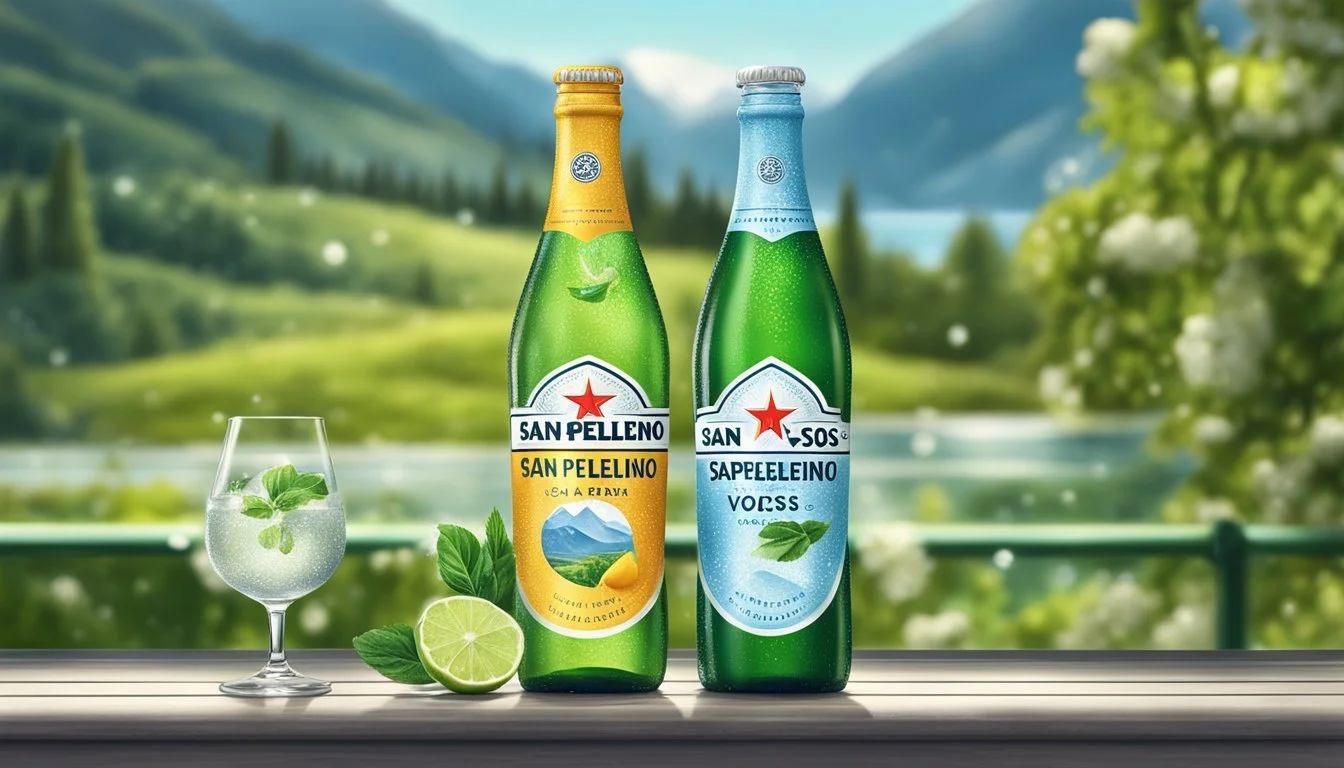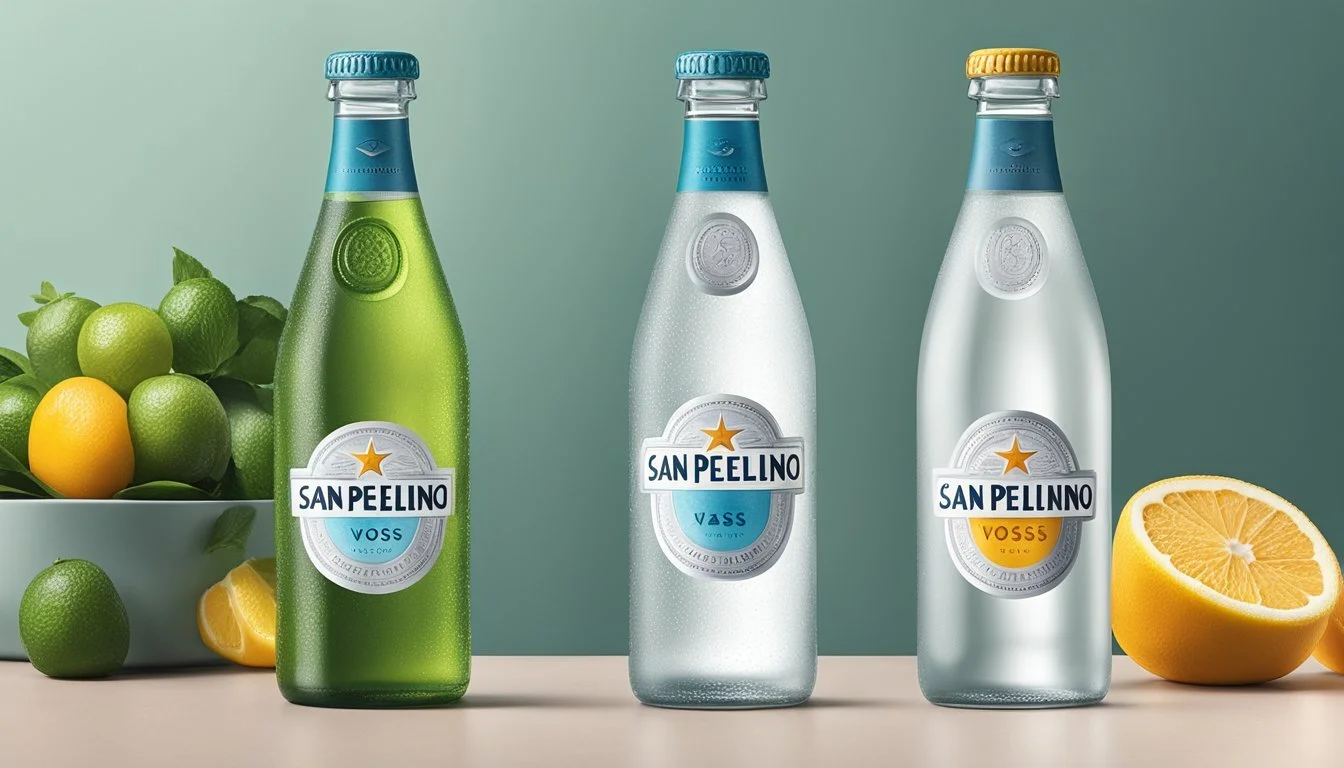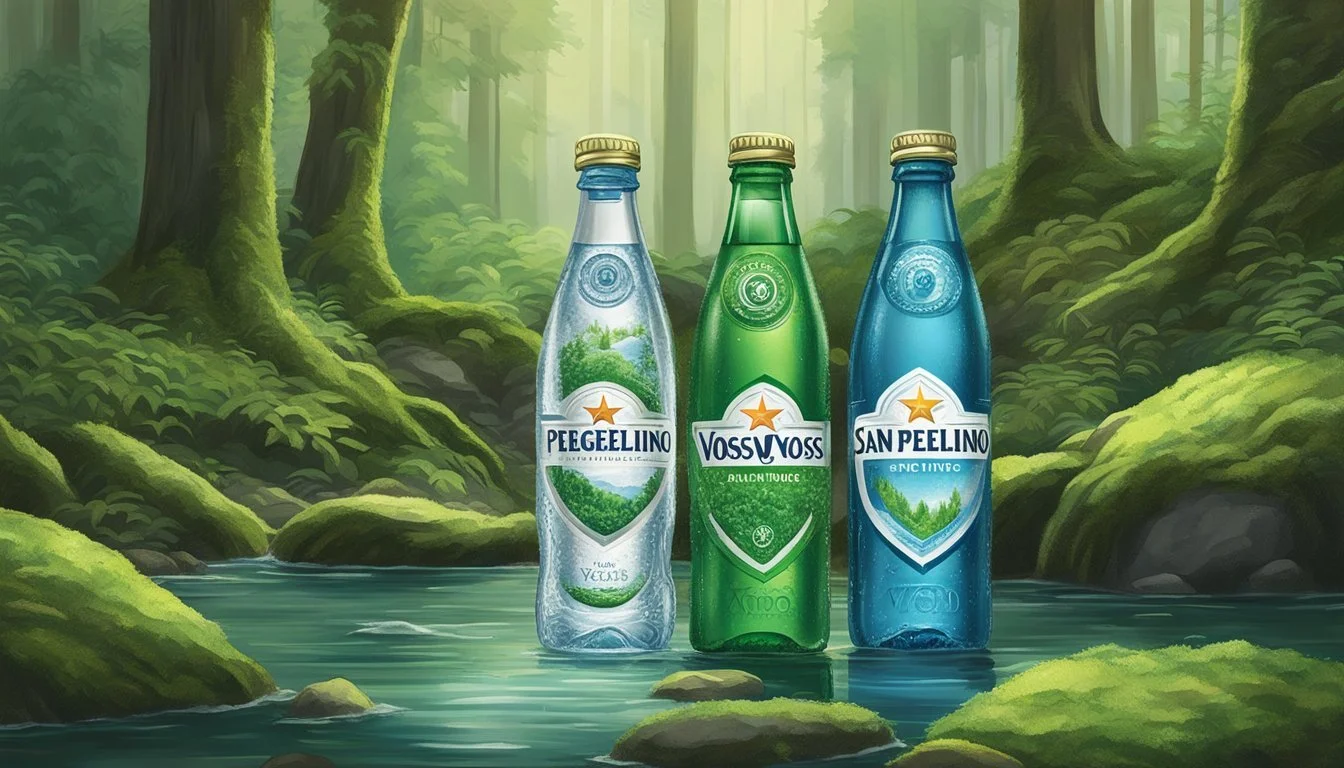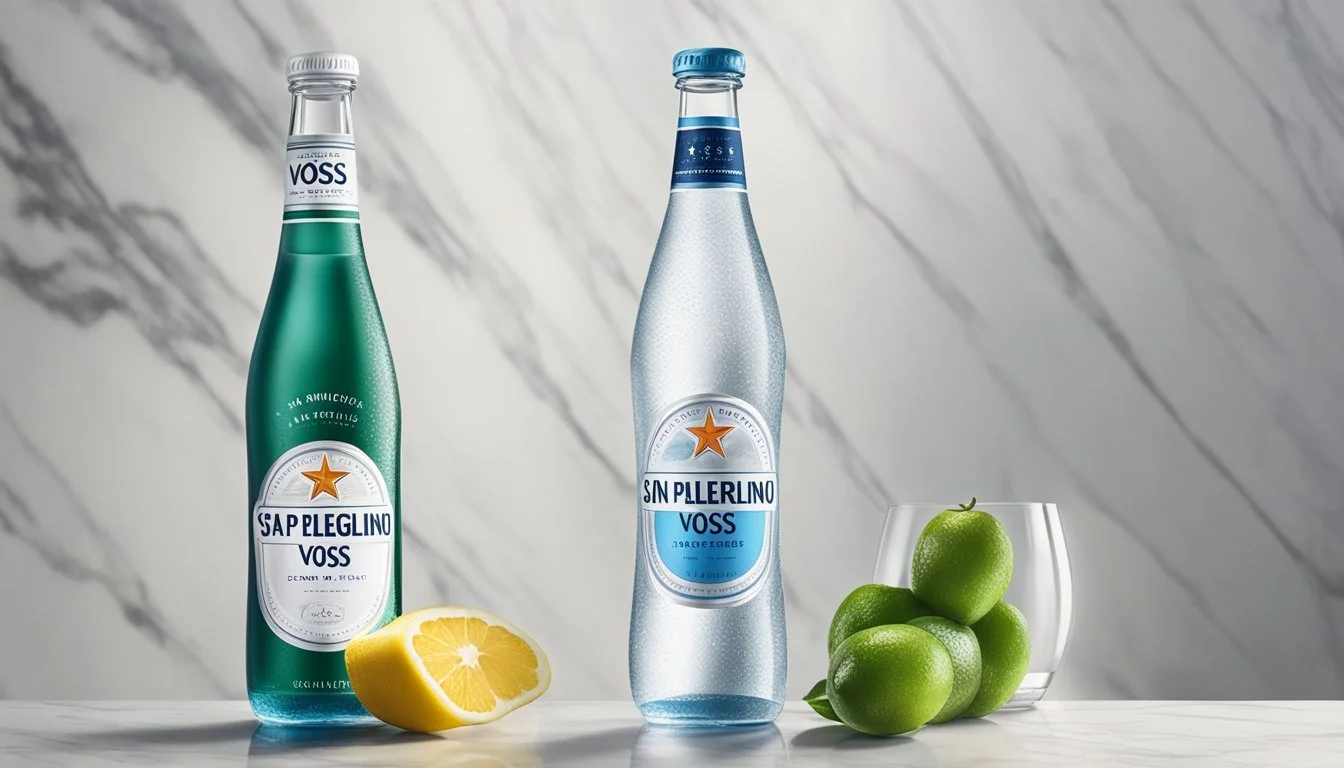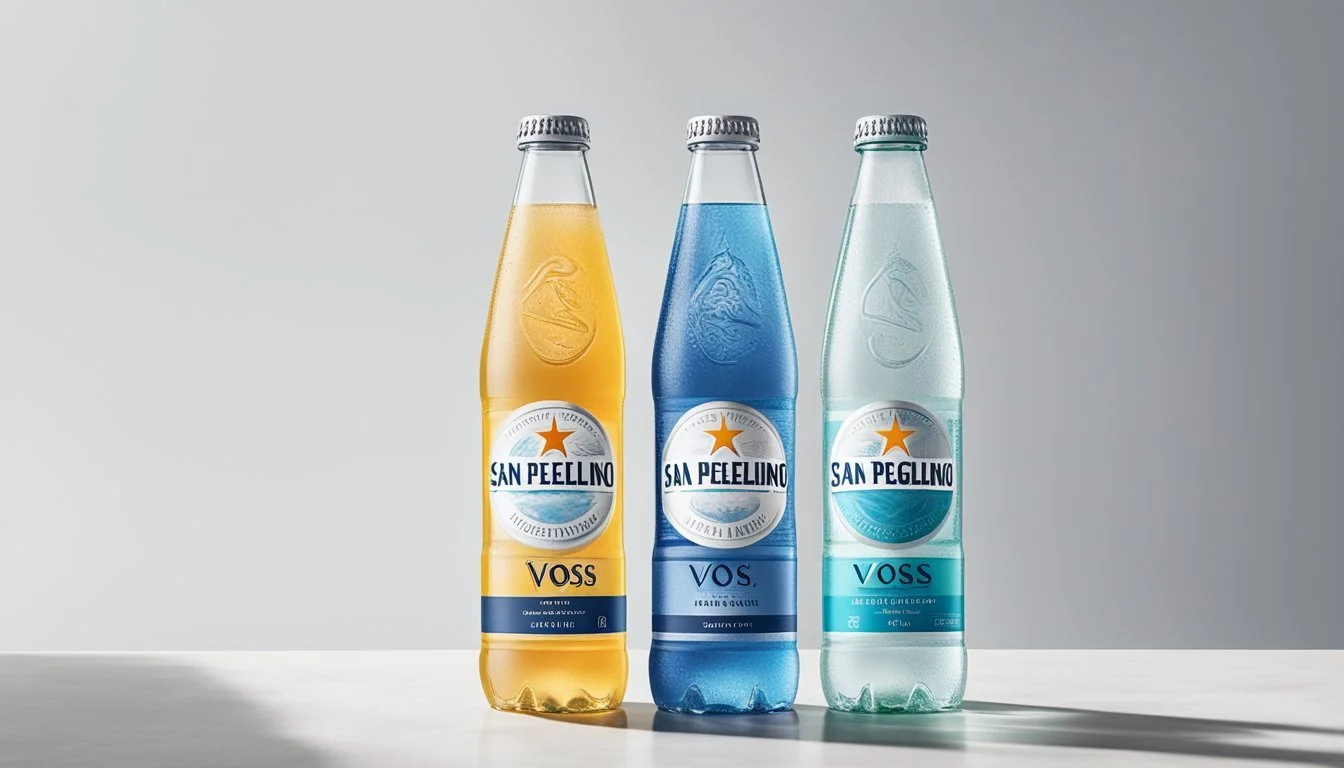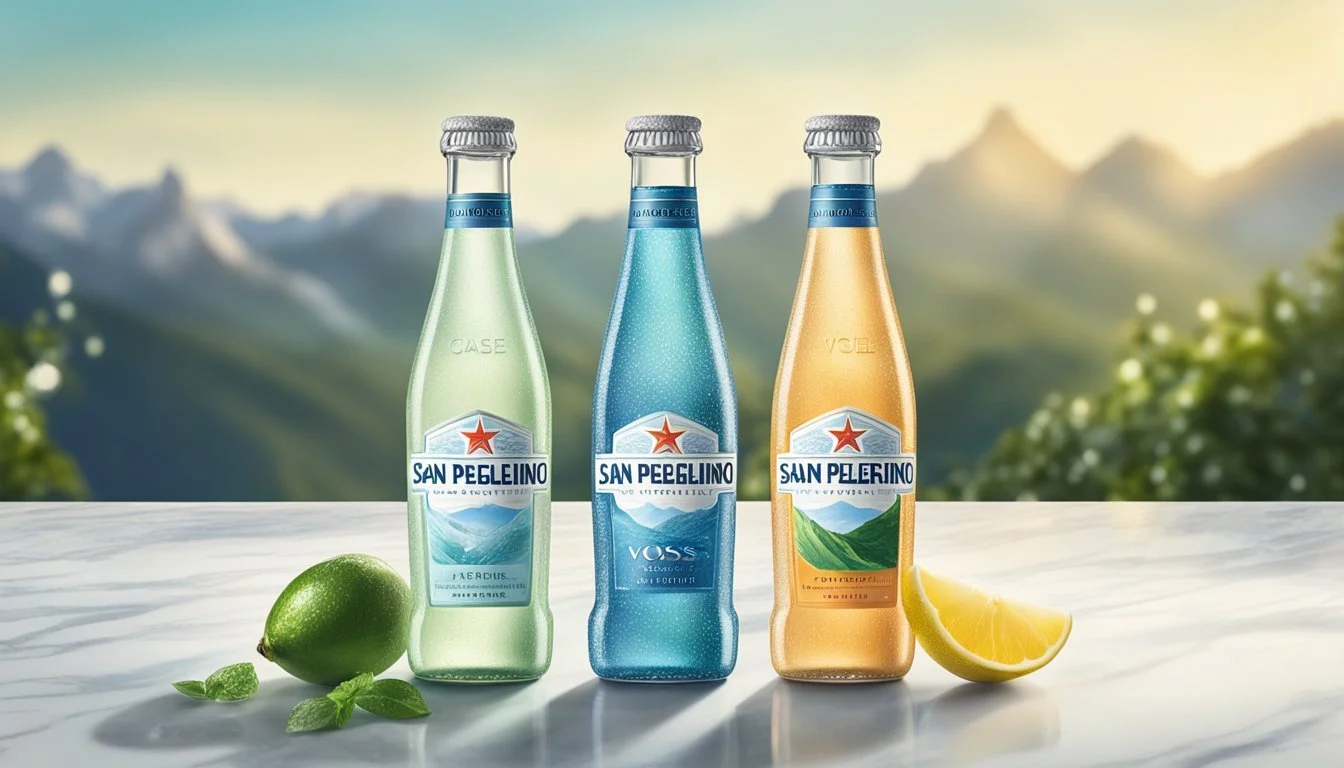San Pellegrino vs. Voss
A Comprehensive Comparison of Bottled Water Brands
In the quest for hydration, two bottled water giants stand out: San Pellegrino and Voss. These brands have carved distinct niches in the market, with their sources and taste profiles leading the conversation on premium bottled water. San Pellegrino, sourced from springs in the Italian Alps, is renowned for its fine bubbles and delicate balance of minerals. Each bottle combines rain and snow from the picturesque mountains, offering a taste and quality refined over centuries.
Voss, on the other hand, hails from the remote wilds of Norway, capturing the essence of unspoiled natural beauty in its product. With a minimalist design and clear, clean taste, Voss appeals to consumers looking for purity and simplicity in their water. The subtle flavor, devoid of heavy mineralization, positions Voss as a smooth alternative to its more carbonated counterparts.
As consumers prioritize health and flavor, the choice between San Pellegrino and Voss becomes a personal one, influenced by individual taste preferences and mineral content appreciation. Both brands deliver distinctly different drinking experiences, promising quality and refinement in every bottle. Whether the preference is for a gentle effervescence and rich flavor or for purity and minimalism, these two water brands offer options to suit the discerning palates of bottled water enthusiasts.
Brand Overview
When comparing bottled water brands, understanding their origins provides context for their reputations today. Both San Pellegrino and Voss are recognized for their unique sources and histories that have contributed to their global status.
History of San Pellegrino
San Pellegrino has its roots deeply embedded in the foothills of the Italian Alps. Originating from the natural spring in San Pellegrino Terme, Italy, the brand has been bottling water since 1899. This naturally carbonated mineral water flows from a thermal spring, where it is enriched with minerals through contact with limestone and volcanic rocks before emerging at the surface.
History of Voss
Voss, by contrast, originates from the pristine wilderness of Norway. The brand was founded in 2000 and sources its water from an artesian well in the small village of Vatnestrøm. Voss water is known for its purity, having been naturally filtered and protected in an underground aquifer deep beneath the earth's surface, free from contact with the air and other pollutants.
Source and Production
When comparing San Pellegrino and Voss bottled waters, the factors that significantly distinguish them are their sources and the production processes. These aspects are critical as they directly impact the water's taste, quality, and mineral content.
San Pellegrino Sourcing
San Pellegrino's source is naturally occurring springs in the Italian Alps, specifically in the town of San Pellegrino Terme. The water originates from rain and snowfall in the nearby mountain valley, which then percolates down through layers of glacial deposits and limestone rocks. This underground journey mineralizes the water and contributes to its distinctive taste. San Pellegrino is known for its rich content of calcium, magnesium, and bicarbonate, which it acquires naturally as it flows through the mineral-rich layers of the Alps.
Voss Sourcing
On the other hand, Voss water comes from the remote southern part of Norway, touted as being untouched by pollutants. Voss is sourced from an underground aquifer that is naturally protected from the air and other environmental factors, which ensures its purity. The artesian source of Voss water lies under layers of rock and sand, which act as a natural filter. Voss takes pride in its low mineral content and its clean, crisp taste, which makes it distinct from the mineral-rich profile of San Pellegrino.
Water Composition
Evaluating the water composition of San Pellegrino and VOSS is crucial in understanding their impact on health and taste. This includes the mineral content and how it affects health implications, as well as the unique tasting profiles of each brand.
Mineral Content and Health Implications
San Pellegrino and VOSS waters are known for their distinctive mineral compositions, which influence not only their taste but also their potential health benefits. Minerals are essential to human health, playing key roles in bone health, hydration, and overall well-being.
San Pellegrino contains calcium, magnesium, bicarbonate, chloride, and sodium. These minerals can aid in digestion and improve bone health, among other benefits.
VOSS, on the other hand, is lower in mineral content, offering a cleaner, crisper taste, with minimal effects on daily mineral intake.
San Pellegrino's higher minerality, due to bicarbonate and other electrolytes, may be beneficial for hydration and nutrient balance, whereas VOSS is often considered for its purity and taste over its mineral contribution.
Tasting Profile: San Pellegrino vs Voss
The tasting profile of bottled water is greatly influenced by its mineral composition and the presence of carbonation.
San Pellegrino: Its carbonation comes naturally from the ground, and it typically has a slightly bitter taste due to the mineral salts. The minerality also contributes to San Pellegrino's recognizable taste, often described as refreshing with a certain complexity due to the blend of minerals like sodium and bicarbonate.
VOSS: Sourced from the Norwegian wilderness, VOSS presents a much simpler taste profile with its still version having a clean and fresh taste. When carbonated, the lack of significant mineral content allows for a more subtle and less complex flavor, making it appreciated for its smoothness on the palate.
Each water type’s composition—San Pellegrino's rich mineral content and carbonation versus VOSS's minimalist profile—offers a distinct tasting experience and health implications, catering to diverse consumer preferences.
Health and Dietary Comparisons
In understanding the health benefits and dietary impacts of San Pellegrino versus Voss bottled water, hydration effectiveness and mineral content are central considerations. These brands cater to different dietary needs which can influence consumer preference.
Hydration and Effectiveness
Both San Pellegrino and Voss provide hydration, which is the primary function of bottled water. The effectiveness of hydration is comparable across most bottled waters, as they principally serve to replenish fluids in the body.
Dietary Considerations
In terms of dietary considerations, the mineral content plays a significant role. San Pellegrino is known for its rich mineralization, which includes calcium, magnesium, and sodium. While these contribute to the daily intake of essential minerals, their levels are relatively low in comparison to total dietary requirements.
Electrolytes: San Pellegrino contains naturally occurring electrolytes which aid in hydration and are beneficial for health.
Alkaline Water: Neither San Pellegrino nor Voss is marketed specifically as alkaline water, which is water with a higher pH level that some believe can neutralize acid in the bloodstream.
Voss, by contrast, has a minimalist profile and is often appreciated for its purity and clean taste.
Kosher: Certain bottled waters are certified kosher, and this may be relevant to individuals following a kosher diet. Consumers would need to check the latest certifications for each brand.
Both brands are suitable for a balanced diet but particularly for those looking for a low sodium option, Voss would be preferable due to its lower mineral content. However, for individuals looking to up their intake of minerals, San Pellegrino might be the better option.
Environmental Impact
In choosing between San Pellegrino and Voss bottled waters, consumers must consider the environmental implications of their production and packaging processes. Each brand's carbon footprint and sustainability practices play crucial roles in this evaluation.
Bottle Packaging and Sustainability
San Pellegrino and Voss both offer products in glass bottles, a choice that can be more environmentally friendly due to the recyclability of glass. San Pellegrino also uses a PET plastic bottle, while Voss is well-known for its iconic cylindrical glass bottles. The production and recycling of glass bottles can be resource-intensive, but their durability and reusability often make them a more sustainable option when compared to single-use plastics.
Sustainable packaging efforts include:
Use of recyclable materials
Reduction in packaging weight
Adoption of renewable resources
Glass bottle recycling is endorsed by environmental groups and can align with the guidelines set by the Environmental Protection Agency (EPA).
Carbon Footprint of Water Production
The carbon footprint of bottled water production is influenced by several factors, including the source of the water and the distance it travels to reach consumers. San Pellegrino's source is in Italy, and Voss originates from Norway. Transporting these products to international markets entails significant energy consumption, and thus, higher emissions.
Additionally, factors such as drought conditions can affect the sustainability of water sources. Efficient use of rainwater and participation in water tasting competitions like the Berkeley Springs International Water Tasting can play a role in brand recognition and imply a certain level of quality management, but this does not directly address the brands' environmental impacts.
Market Presence and Consumer Preference
San Pellegrino and Voss are leading brands within the bottled water market, each with a distinct position. These brands have crafted unique images that appeal to particular demographic segments and have leveraged their brand strength to capture consumer preference and shelf space.
Brand Recognition and Availability
San Pellegrino, an Italian brand recognized for its sparkling mineral water, has a global distribution network, making it widely available in major retailers, restaurants, and hotels. Its market presence is bolstered by its historic roots and distinctive green bottle with the iconic blue label. Voss, on the other hand, is known for its Norwegian origins and sleek, cylindrical bottle design. Voss has gained market share through its premium positioning, specifically targeting high-end consumers and luxury venues.
San Pellegrino: Available in over 120 countries.
Voss: Marketed in over 50 countries, with a strong emphasis on the image of Norwegian purity.
Consumer Taste Preferences and Trends
Consumer taste preferences have noticeably shifted towards flavored sparkling waters, with brands like La Croix and Bubly becoming household names. In response, San Pellegrino has introduced a range of citrus-flavored sparkling waters, which have been favorably received in the market. Voss, traditionally known for its still water, has more recently stepped into the flavored sparkling water arena to compete directly with the likes of Perrier and Topo Chico.
Flavored Sparkling Water Preferences:
Citrus flavors are popular among consumers.
There is a growing trend for natural and zero-calorie options.
Blind Taste Test Results
Blind taste tests reveal interesting insights into consumer preferences. In tests where San Pellegrino and Voss are pitted against other sparkling water brands such as Perrier, La Croix, and Topo Chico, San Pellegrino often ranks highly for its fine bubbles and balanced mineral content. Voss, noted for its purity and clean taste, typically fares well when compared with premium still water brands like Fiji Water and Evian but faces mixed reviews in the sparkling category.
Blind Taste Test Findings:
San Pellegrino: Frequently praised for its signature taste and carbonation levels.
Voss: Preferred by those who enjoy a smooth and unadulterated water taste.
Price and Accessibility
When choosing between San Pellegrino and Voss, consumers often consider price and accessibility as significant factors.
Comparative Cost Analysis
San Pellegrino is often priced competitively and is known for being a premium brand without an excessively high cost, making it accessible for a wide customer base. Prices can vary depending on the retailer and geographical location, but a general price point for a 12-pack of San Pellegrino 750ml bottles is typically around $15-$20.
In contrast, Voss, known for its luxury positioning and sleek bottle design, usually commands a higher price point. A 12-pack of Voss 800ml bottles may range from $20-$30, making it a pricier option. Prices can fluctuate based on factors such as packaging type—glass or plastic—and point of sale.
Distribution and Retail Access
Both brands have strong distribution networks, but their accessibility may differ. San Pellegrino has a widespread global distribution and is readily available in most supermarkets, restaurants, and online retailers. Its broad access makes it a go-to choice for many consumers looking for sparkling mineral water.
Voss, originally from Norway, also has considerable distribution, but its availability is often associated with high-end retailers, select supermarkets, and luxury venues. This selective availability can sometimes make it less accessible than San Pellegrino, particularly in regions where premium products are not commonly sold. However, Voss water is also available online, which can offset physical retail limitations.
Regulation and Safety
When evaluating bottled water like San Pellegrino and Voss, it is critical to understand the measures in place that ensure the safety and quality of the product. These measures include strict testing protocols and adherence to regulatory standards.
Quality Assurance and Testing
San Pellegrino and Voss, like all bottled water companies, have comprehensive quality assurance programs. San Pellegrino sources water from Italy, near the Italian Alps, and includes natural minerals and added carbon dioxide. The company conducts regular testing to ensure the water meets safety standards before bottling. Voss, sourced from Norway, is known for its purity and mineral content. Both brands must consistently test for contaminants and maintain a clean ingredient list to ensure safe drinking water for consumers.
Testing Parameters Include:
Microbiological purity
Mineral content analysis
Contaminant screening
FDA and EPA Regulations
In the United States, bottled water, such as San Pellegrino and Voss, is regulated by the Food and Drug Administration (FDA), ensuring it meets the standards set for clean drinking water. These regulations are comparable to the Environmental Protection Agency's (EPA) standards for tap water.
Key FDA Regulations:
Bottled water must be tested and meet specific health-based standards.
Labels must accurately reflect the contents and origin of the water.
Bottled water brands must comply with these regulations to be considered safe for public consumption. The ingredient list on bottled water labels provides transparency regarding the water’s source and any potential additives.
While the EPA does not directly regulate bottled water, the agency does set guidelines for municipal water supplies, which indirectly affect bottled water standards since some brands use municipal sources before further processing and bottling.
Conclusion
When considering San Pellegrino and Voss as bottled water options, consumers weigh several factors including taste, health impact, environmental considerations, and price. San Pellegrino is known for its mineral content and distinct taste, while Voss boasts a clean, crisp flavor profile.
Taste:
San Pellegrino: Distinctive, slightly salty.
Voss: Pure, neutral.
Health Impact:
Both brands offer essential minerals, but their contributions to daily intake are minimal.
Opting for natural mineral waters like San Pellegrino may offer added benefits due to its mineral content.
Voss provides a pure hydration experience with minimal additional nutrients.
Environmental Considerations:
Choosing glass-bottled options from both brands can lead to a smaller environmental footprint compared to plastic bottles. Both companies show a commitment to sustainability, though consumer habits and local recycling programs also play a pivotal role.
Price:
San Pellegrino and Voss are premium brands and their pricing reflects that. Consumers often pay more for these brands compared to generic bottled water.
In summary, the choice between San Pellegrino and Voss is largely based on personal preference. The discerning consumer considers factors such as the subtle taste differences and mineral content, as well as how these brands align with personal values concerning health and environmental impact. When making a decision, they must also consider the premium price of these high-end water brands.

